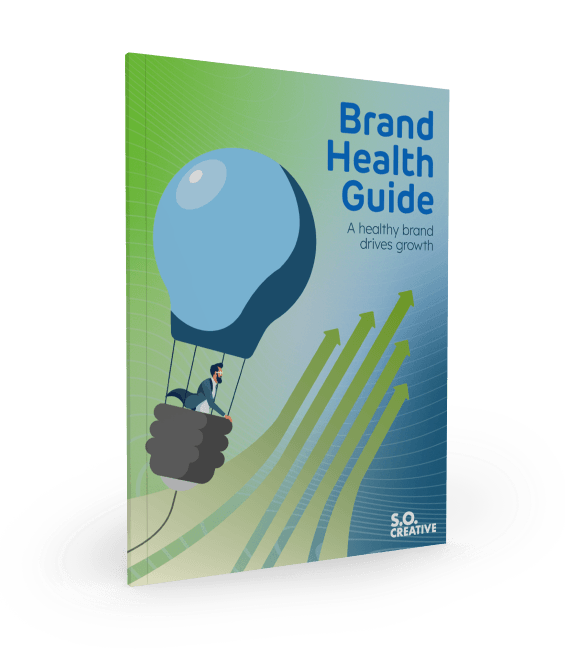The process of brand development has two components: emotional and scientific. You need to understand the science to help identify the emotional triggers that help attract, retain, and delight customers. This helps lead you to awareness and brand management.
Brand Development — The Science Part
The science part of brand development includes research, analysis, and brainstorming. This process helps you identify your goals. For example, do we need to repurpose or reposition your brand or create new market offers?
Before we can define what success looks like, we need to understand the business environment and take stock of the assets we have.
Market Research — Who’s Buying?
In the research phase, you need to identify your target audience, understand your competitors, and audit for business strategy.
Demographics– are the physical characteristics that define a group of people. This might include, age, sex, ethnicity, marital status, education and employment. Demographics has been expanded to include psychographics which is the study and classification of people according to their attitudes, aspirations, and other psychological criteria, especially in market research.
- Competitive review– It’s almost impossible for a business to operate in a vacuum. Know your competition, what are competitors selling, at what price, what are their promises, their strengths and weaknesses. Where do you stand in comparison?
- Visual audit- Part of a company is the image you project. And how it’s projected. To know what you have or need a visual audit must occur. Do you have enough file versions of your logo in the right colors and shapes? Do you have updated images of your services or products and is the look consistent across all the different media?
- Review brand messaging- Brand messaging references the underlying value proposition and language used in your content. Buyers relate to your brand because it’s inspirational, persuasive, motivational, and well, sticky. Ultimately, it makes customers want to buy the product. The stickiness occurs when a brand message is memorable. It should be current and deliver the real value of your products or services.
Ex: DuckDuck Go: Truly Private Web browsing. Does not allow any tracking and let’s you know that as soon as you arrive on its site. - Business strategy- A long-term plan for your company that will reach the desired size you envision. This includes your company’s goals and objectives, the type of products/services that you plan to build or offer, the customers you want to sell to and the markets that you serve to make profit. Strategy serves as a road map to get you where you want to go.
- Budget review- Costs and objectives are in constant flux. Businesses need to know if they have right the right amount of money budgeted for their goals. An annual budget review will help keep the company on track.
Market Analysis — Do They Want What You’re Selling?
The next phase is to determine whether you have the right product at the right time and have calculated potential marketplace shifts.
- Focus groups – A focus group is a small set of six to ten people who usually share common characteristics such as age, background, geography, etc. The set comes together to discuss a predetermined topic. The main purpose of focus group research is to draw upon respondents’ attitudes, feelings, beliefs, experiences and reactions in a way in which would not be feasible using other methods, for example observation, one-to-one interviewing, or questionnaire surveys. It is where many of the diamonds of understanding about your product or service can be found.
- Sales figures – Reviewing sales and understanding where they come from is crucial to the success of a brand.
- Market changes – What happens in the economy or with businesses that could affect your business. Who are your competitors and what are they doing? Are there new ones? Supply chain – can you get the raw materials you need for your products and can you get your products to market? Understand the new technologies and innovations that might affect your business.
- New Product offerings – Your business may need to engage in this process due to changes in consumer preferences, increasing competition and advances in technology or to capitalize on a new opportunity.
- Business Strategies – Practically speaking, only three basic business strategies exist: a cost strategy, a differentiated product or service strategy, and a focus on a niche strategy. Understanding these strategies is critical to writing a good strategic business plan.
- Brand extensions – A brand extension is when a company uses one of its established brand names on a new product or new product category. The strategy behind a brand extension is to use the company’s already established brand equity to help it launch its newest product.
- Search volume – How many people are looking for you or your product online? The queries help drive your SEO and content strategies
Brainstorming — How Do We Meet Our Marketing and Branding Goals?
Once we’ve identified where we are, where the market is going, and the opportunities that lie ahead, that’s when we can create specific strategies to accomplish your goals.
Within the brainstorming, we look at how you define yourself and your market to help focus your message. This helps frame growth strategies and how you will develop and market your brand.
- Brand voice: How you interact with your audience and how you talk to them
- Brand experience: How do your customers feel about your company
- Brand promise: Who you are, what you do, and why it matters
Your brand promise is how you differentiate yourself within the market. For example, FedEx has a clearly defined brand promise: Your package will get there overnight. Guaranteed. Google’s brand promise is to organize the world’s information and make it universally accessible and useful.
All of this creates the basis for brand awareness to give consumers something to remember you.
Brand Management — The Execution Part
Brand management is how you meet your overall goals. When we are developing brands, we use the information we gained during the brand development phases to assess and build your brand identity and marketing strategies.
Brand Identity — How You Look and Perform
Developing the brand identity
Brand identity has to take into account both the external and internal stakeholders. The external identity will be about assets, which we define as web, store, product, and print.
- Web: websites, social, blogs, storefront, e-commerce
- Store: logo, design, architecture, uniforms, voice
- Product: development, naming, package and label design
- Print: business cards, letterhead, forms, signage
Your internal brand identity is focused on driving the brand culture within your organization so that your employees can deliver a customer experience that reflects your goals and brand promise. We break it down using the same four categories aimed at internal stakeholders.
- Web: intranet (or wiki), maintenance, training, administration
- Store: logo use, management style, customer service, employee training, voice
- Product: culture, product training, sales training, promotions, and offers
- Print: forms, training systems, shipping labels
It is all aimed at creating a consistent brand experience for customers regardless of their touchpoint. When they see your ads, marketing efforts, sales pieces, or website or they interact with your customer support team, they get the same message and how your brand relates across all engagements.
Brand Marketing — How You Sell Your Brand
Once brand identity and voice are created, you can begin to define your brand marketing strategy. This encompasses your public relations, customer education, and inbound marketing efforts. It will also encompass your external advertising, such as:
- TV & radio
- online advertising/PPC
- email marketing
- SEO
Finally, we believe that to develop a consistent brand experience, you also need to focus energy on internal advertising efforts to create a brand culture within your organization. This includes:
- communication styles
- training and team building
- incentives
Brand Development and Integrated Marketing
At S.O. CREATIVE, our specialty is brand development and integrated marketing communications for B2B industries. Connect with us today and let’s talk ideas that drive business!

